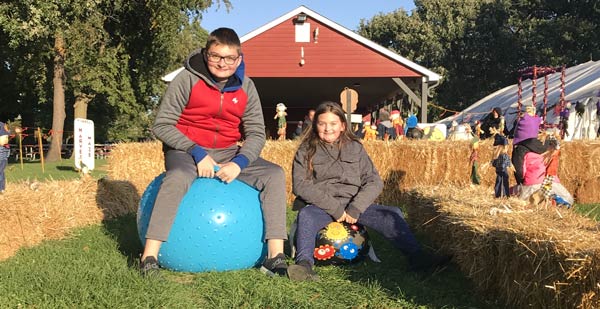
‘Tis the Season…to Prepare!
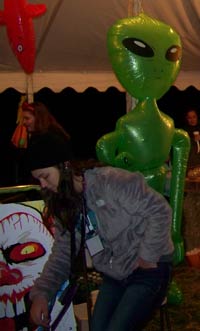 Fall and winter mean hot cider and pumpkin lattes, toasted marshmallows, hayrides, sleigh rides…and extra measures to manage risks for member agencies. “This time of year, members need to think about special precautions for agency events,” says Mary Pedersen, PDRMA Risk Management Consultant. “It gets darker earlier, and cold weather means increased slip, trip and fall hazards, among other risks. Planning outdoor events safely in fall and winter takes advance planning, including coordinating with local emergency services.” Fall and winter mean hot cider and pumpkin lattes, toasted marshmallows, hayrides, sleigh rides…and extra measures to manage risks for member agencies. “This time of year, members need to think about special precautions for agency events,” says Mary Pedersen, PDRMA Risk Management Consultant. “It gets darker earlier, and cold weather means increased slip, trip and fall hazards, among other risks. Planning outdoor events safely in fall and winter takes advance planning, including coordinating with local emergency services.”
One good example of seasonal readiness is Bourbonnais Township Park District’s Sleepy Hollow fall event. “Our Night in Sleepy Hollow is a four-night event we host outdoors at one of our parks in mid-October,” explains Nicole Jenkins, Superintendent of Recreation. “It is a play re-enactment of Washington Irving’s ‘Legend of Sleepy Hollow’ with Ichabod Crane and the headless horseman. We feature a play production inside an old barn with our local theatre group that highlights the story of the headless horseman legend, complete with a hayride into the woods with a trained horseman in costume.” It also includes kid friendly hayrides, barrel train rides, carnival style games, a mini corn maze, laser tag and a kids play zone with a straw-bale maze and corn pit. “It all happens after dark to add to the spooky feel, and while it does add lighting challenges to our logistics, it makes the event that much more of a fun, family Halloween tradition.”
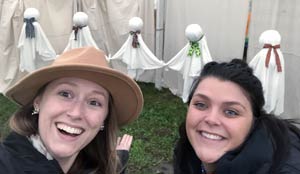 Families simply enjoy the spooky celebration, but their safe fun is the result of months of planning, training and organization by Bourbonnais Township Park District employees. Although they hold general monthly safety meetings year-round for all agency events and activities, special-event safety meetings begin six months before the event itself. The agency conducts ground inspections, hayrack and vehicle inspections, does preventive maintenance on chainsaws and tests outdoor lighting and portable generators. “At any outdoor event, we have to consider both safety and accessibility, so we inspect our grounds, set up lights and ensure our walkways and paths are accessible. To reduce tripping hazards, we cover cords on paths and mark any tent stakes or ropes,” she notes. Families simply enjoy the spooky celebration, but their safe fun is the result of months of planning, training and organization by Bourbonnais Township Park District employees. Although they hold general monthly safety meetings year-round for all agency events and activities, special-event safety meetings begin six months before the event itself. The agency conducts ground inspections, hayrack and vehicle inspections, does preventive maintenance on chainsaws and tests outdoor lighting and portable generators. “At any outdoor event, we have to consider both safety and accessibility, so we inspect our grounds, set up lights and ensure our walkways and paths are accessible. To reduce tripping hazards, we cover cords on paths and mark any tent stakes or ropes,” she notes.
“We offer campfires both for our patrons to sit by as well as for our storytelling staff, so we need to make sure we monitor those fires,” she continues. The agency ensures each fire has extinguishing materials available as well as barriers, so the fire doesn’t spread.
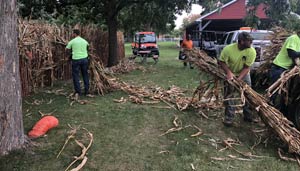 Staff not only attends the special-event meetings but also does on-site training for volunteers right before the event, so the volunteers know the agency’s weather safety procedures, lost child protocols, what to do and who to contact for an emergency and where first aid kits and defibrillation devices are at the event. Staff not only attends the special-event meetings but also does on-site training for volunteers right before the event, so the volunteers know the agency’s weather safety procedures, lost child protocols, what to do and who to contact for an emergency and where first aid kits and defibrillation devices are at the event.
Jenkins said special event safety checklists are great tools and effective reminders. “We base our special event checklist on a modified version of what PDRMA has available on its website,” she explains. “Our list includes checks for campfire safety along with the specific equipment we use. It helps us reduce risks as well as ensure things run smoothly during an event. It’s no fun for patrons — or staff — if a hayride gets a flat tire out on the trail!”
If You Need to Save Time…
PDRMA’s Risk Management Review (RMR) can help you save time, according to Becky Cooper, Safety Manager at Naperville Park District. (And that might be time you can devote to special event planning or developing a winter preparedness guide.) As we near the end of the first year of our RMR rollout, we spoke with Cooper about her agency’s experience.
“Overall, the RMR has been a smooth transition,” she says. “Rather than going through mounds of paperwork, as we did with the Loss Control Review, we now have the flexibility to upload our documentation to the online form, which saves us a significant amount of time. I also appreciate being able to assign the forms to specific employees, as it’s very helpful to have other staff review and complete the forms. The fact that the RMR is an ongoing process rather than something we do every three or four years is also an improvement. We now have time to focus on specific areas in our agency as opposed to managing a major audit within a short, 10-month timeframe. It’s a much better use of everyone’s time.”
Cooper adds that she most enjoys the sharper focus allowed by the RMR. “I like that we can concentrate on specific areas we feel need the most attention. When we meet with our PDRMA Risk Management Consultant at the annual RMR Kickoff Meeting, we discuss our agency’s strengths and weaknesses. We also review our claims history over the past five years and review other incidents we consider ‘close calls.’ I have the opportunity to voice my concerns and request services that would benefit my agency.
“I think it’s also important that members now have the opportunity to identify their own SMART goals,” Cooper adds, “so we can customize them to our agency. It shows PDRMA understands each member is unique and encourages us to identify areas that need attention or improvement — which likely leads to more meaningful engagement within each agency.” |
Don’t Forget to Connect with Emergency Services
The Highland Park Fourth of July parade shooting is still very much top of mind for many members, and connecting with local emergency services — police, fire and Emergency Medical Services — should definitely be on your outdoor-event safety checklist. Click here to review PDRMA’s LRN Alert 22-13 — Highland Park Shooting Follow Up for related resources and recommendations.
Your agency may choose to go a step further and hire security for certain events. “At our large events, we typically hire a law enforcement officer to work security,” Jenkins explains. “They are helpful monitors with our money drops and assist with any incidents that may occur. Often a uniformed officer is a wonderful deterrent for mischief. If we are hosting a smaller event, we email local law enforcement telling them when and where it will take place, so they know we’re planning a park event that patrons will attend during the specified times.”
Tips for a Safe Winter and/or an Event
Even if your agency doesn’t host an outdoor winter or holiday event, you still need to be ready to handle snow, wind, ice and the increased risks that winter weather brings. To handle every contingency, consider creating a formal plan for the season like Arlington Heights Park District did. It has a 29-page Winter Preparedness Manual that guides staff, supervisors and administrators in remediating the aftermath of blizzards, heavy winds and ice storms.
The manual outlines weekend and overtime scheduling of staff with contact information along with detailed responsibilities and time frames for regular and on-call staff. It clearly spells out which department and personnel are responsible for tasks and when, and details not only snow/ice removal from parking areas and roads but winter building inspection routines during a snow event as well.
I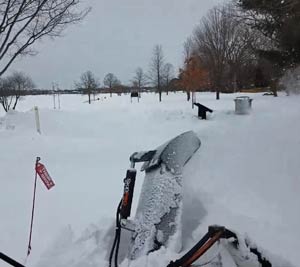 t covers every aspect of snow removal, building by building and road/parking lot by road/parking lot, with maps for clarity. The manual even specifies timeframes for snow removal (four, eight or 12 hours after snowfall, depending on the location) and which tools and supplies each custodian and supervisor should have on hand. t covers every aspect of snow removal, building by building and road/parking lot by road/parking lot, with maps for clarity. The manual even specifies timeframes for snow removal (four, eight or 12 hours after snowfall, depending on the location) and which tools and supplies each custodian and supervisor should have on hand.
Invest the Time
From hosting a Night in Sleepy Hollow to keeping the parking lot and sidewalks at Arlington Ridge Center clear of snow and ice, the key to success lies in early planning and taking the time to train your staff to respond appropriately in any situation! |